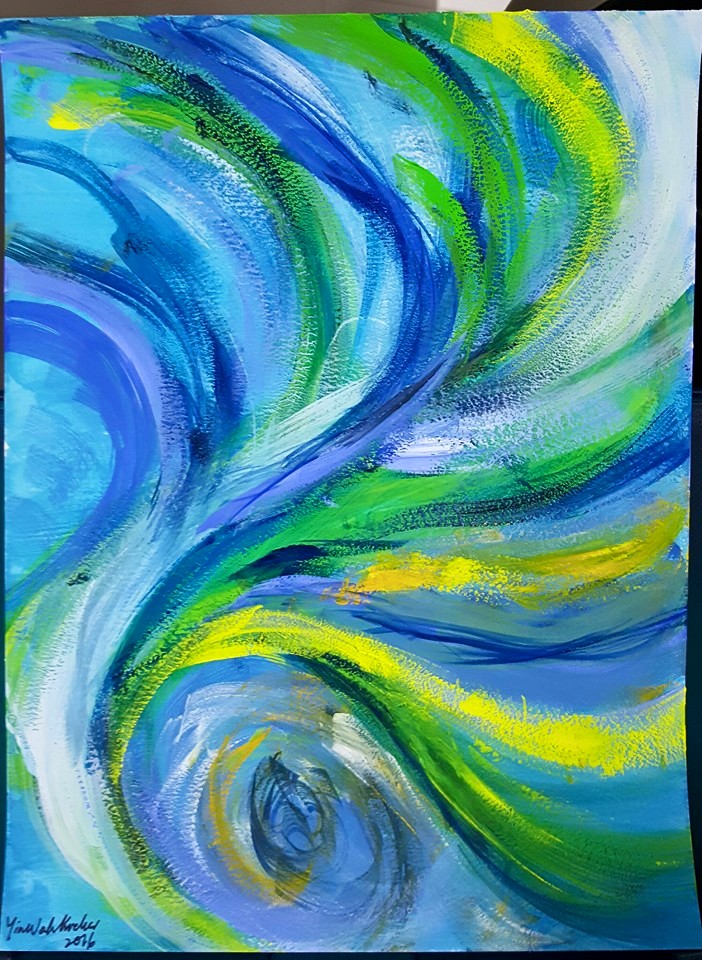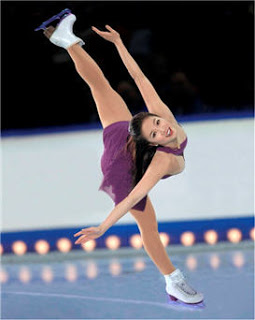Grids and Gestures: 6 Learning Takeaways from Exploring Comics-Making
1. Make learning doable.
When Nick Sousanis, cartoonist, scholar, teacher, art critic, author of Unflattening, put out a Twitter call for participation in a collective comics-making exercise, I knew I could probably do it. Unlike other projects which typically took longer time, and which I usually could not complete, five days was doable. Creating comics is something I aim to do some time in the near future (along with many other things). I could dive in and try.
Next week join in a 5-day comics-making challenge no drawing skills required! Info here, please share https://t.co/iSEQacLMky#gridsgestures
— Nick Sousanis (@Nsousanis) April 7, 2016
When the day arrived, I was still thinking through ideas in my head and not making my thoughts visible. Then I saw a few of my Twitter friends had posted their sketches. I tweeted with Mariana and said I would do it. THAT got me moving because I had committed to doing so! Like going to the gym, doing it with friends is immensely helpful. So I started doodling something for this “comics-making” exercise, a day at a time.
2. Make learning challenging: Not drawing any “thing” of existing likeness.
Since I doodle, draw and paint — sometimes, I understood the concept of “gestures” as it was used in figure drawing — quick sketches of the human figure to capture the essence of the person. Perfection was not expected. What held me back initially was the instruction not to draw “things” but that the marks or gestures should be meaningful. The first day’s doodle was the hardest to finish. How then do I fill space on paper with marks that represented what I experienced in a day? What does a grid look like? These were the major questions I had. Day 1’s posting ended up looking like this:
I used charcoal instead of pencils because charcoal sketching allows me to create bold dark strokes quickly. Pencils are too “mild” for me. Not thinking too much, I sketched two triangular-shaped and one four-sided grids that weren’t like the typical box grids used in comics-making. It didn’t look pretty but I was alright with posting this unrefined drawing publicly. I could accept that it was part of the process of exploring ideas.
3. Make learning boundary-free for adult learners: Innovate without being prescriptive.
Visiting the #GridsGestures hashtag, I saw that different participants had different interpretations of Sousanis’ instructions. Some drew “things” while others tried not to. Several used digital sketching apps. Many did not.
However, not once did Sousanis say someone was “wrong” or “right”; he simply allowed us to play and do our thing. This provided an inclusive environment where those new to comics-making could experiment with our ideas in public without feeling judged for not conforming to some standard. Individual styles were embraced.
This is something I noticed about our current “innovation-obsessed” world. We talk about innovating a lot. In fact, I’m quite weary of the word, pardon me. I noticed that some innovation disrupters encourage people to innovate in a “certain” way.
Innovation Initiator to Potential Innovator: Use this app. Wear these colors. Talk this way… Do these things… blah blah.
Perhaps, some folks may not realize that it is not very inclusive to insist that innovation unfold a certain way — in fact, it’s somewhat paradoxical and oxymoronic (predictable innovation?). What could happen instead is that we work with the person to break through conventions from the inside-out.
With the #GridsGestures exercise, I was allowed to explore comics-making freely. On the second day, I decided to use tools I was comfortable with, soft pastel chalk and charcoal with wet brushes:
I had a pretty nice product but I wasn’t sure if I was getting any better at comics-making!
4. Make learning deep and engaging: Getting more reflective.
On the third day, I wondered what I was going to sketch. I had tried color and used my favorite tools. I decided on the idea of using negative space to create the gestures and to portray the flow of ideas between grids. It took a bit more time to reflect and think about how I would use negative space, but not too much, since I was still using my favorite charcoal tool to sketch and boxes as grids. I left out the spacing this time because I wanted to show continuity of ideas with the bold boxed outlines.
I had refrained from using digital apps because they do not create the effect I want. To me, digital apps make the outcomes look too “perfect.” I like drawings and paintings to look raw and authentic. I could also get more hands-on with non-digital tools.
5. Make learning sustainable: Not giving up.
After the third day, I felt quite sure I had plateaued out in terms of ideas. I didn’t know how else to portray my day using comics without being repetitive. Urrgh, I was going to be boring and unoriginal. The burden to perform to the expectations of others reared its ugly head. I quickly checked myself and decided that I could do just what I wanted to do. There was no pressure to please “viewers” on Twitter. I would perservere and draw something. Every night, for the past 3 nights, I would sketch something before going to bed. This night was no different but I was tired because of work commitments. I pressed on. There was just one more sketch to make! My Twitter friends had posted. I could make it too.
This is one advantage of a collective exercise. Doing it with people you’re familiar with simply makes it easier to keep up with a routine!
6. Allow the learner to own the learning: Stretch and break out of the mould.
It took me 2 days to get to my fifth and final sketch with my work schedule.
By then, even if my fellow participants might not be bored with my sketches, I was getting bored with my own renderings. How else could I use grids and gestures? I googled the Internet and flipped through a comics book I own. Nothing new was getting through to me. Then I saw a beehive-looking set of grids on a webpage. Could comics be drawn in hexagons? How would the ideas flow? These questions formed the impetus for my final sketch:
I used gestures to try to mimic reality because comics is one format we use to express real-life experiences. I made the markings flow in different ways and some hexagons were filled with more charcoal dust than others. Another wonderful thing about charcoal is that they don’t produce a frozen look, IMHO. The gestures were also intentionally smudged and/or dark markings were erased with a kneading eraser to create white spaces. To show that ideas connect across hexagons, I drew a series of curved lines from one hexagon to the final one (which was not fully filled).
Sousanis’ feedback was that it was “a great contribution” to #GridsGestures but hexagons are “not easy” to sketch in. I agree with that, and will see it as a growth challenge, :-).
To round up this little exercise, let me say it was fun and just long enough for me to complete it. I enjoyed doing it with some familiar folks on Twitter. They encouraged me to press on. I also got to know some new people. A few of them are still doing it and yes, do they make beautiful art! Check out Anastasia Salter’s sketches:
Busy day, busy #gridsgestures. pic.twitter.com/jsNC8L1Hc8
— Anastasia Salter (@AnaSalter) April 22, 2016
Thanks to Nick Sousanis again for this neat exercise. In closing, he said:
thanks to all who joined in the comics-making challenge all week! I’ll post a gallery of everything soon & we’ll do it again! #gridsgestures
— Nick Sousanis (@Nsousanis) April 16, 2016
Till we meet again, adieu!









One Comment
Pingback: